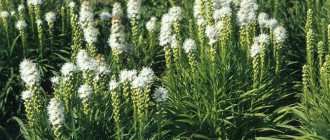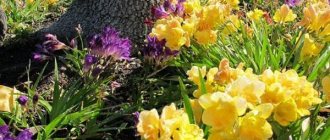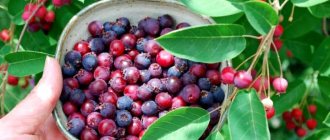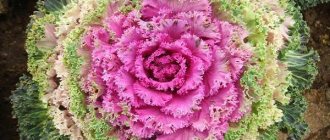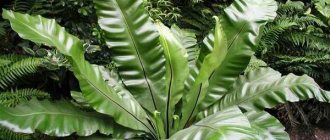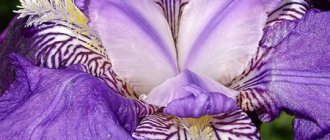Leucanthemum (nownberry): growing from seeds in open ground
Most cornflowers are perennials. In the first year from planting, when grown from seeds, cornflower forms a root system and a rosette of leaves, and only in the second year flowers. But recently, perennial hybrids have appeared on sale, blooming already in the first year of planting. For example, "White King" (Leucanthemum 'White Knight' F1), which begins to bloom just three months after sowing.
When to plant cornflower seeds in open ground
In the middle zone, seeds are planted in open ground at the end of April - beginning of May, when the threat of frost has passed and the daytime air temperature has settled in the range of +15-18 °C. For the southern regions, the time for planting cornflower seeds in the spring shifts to early to mid-April. The first shoots can be expected 15-20 days after sowing.
You can also grow cornflower from seeds planted in the fall with the onset of the first frost. With this method of planting, flowering can be seen already in the middle of next summer. When sown before winter, the germination rate of cornflower decreases, but the plants become more hardened and are less susceptible to diseases associated with unfavorable weather conditions.
In the regions of the middle zone, Siberia, the Urals, and the Moscow region, it is possible to sow cornflower in open ground only if the variety is winter-hardy. As a rule, agricultural companies indicate this information on the bag or on the official website. In most cases, when purchasing seeds from Russian producers, there is no doubt about their frost resistance.
General requirements for soil and planting site
The ideal soil for planting cornflower is considered to be pH-neutral or, in extreme cases, slightly acidic chernozem. If there is no such land on the site, before planting the nevberry you will have to create it - add humus or compost at the rate of 15-25 kg per 1 m² and enrich it with organic fertilizers. In addition, the soil should be well aerated and should not condense moisture excessively. Several times a season, the area where the nevus grows must be weeded with loosening the top layer, this helps saturate the soil with oxygen and improves its moisture permeability. Excessively clayey or excessively sandy soil is not suitable for cornflowers. In poor soil and lack of moisture, the flowers grow small and inconspicuous.
Nivyanik loves open, sunny, slightly elevated areas. When planting in partial shade, lodging or bending of peduncles is occasionally observed. When planted in the shade, even with proper care, the cornflower stretches out, its leaves acquire a yellowish tint, and the number of flowers decreases. Stagnant water is also detrimental to garden chamomile. On swampy soil, it begins to hurt and rot.
How to sow seeds
A week before sowing, the plot is dug up to the depth of a spade and mixed with compost at the rate of 7 kg per 1 m². Immediately before sowing, the soil is moistened without flooding. Then, at a distance of 30-60 cm (depending on the variety), grooves are made with a depression of 1-2 cm. The seeds are planted at intervals of 30-60 cm and carefully sprinkled. The soil for sprinkling is prepared in advance from a mixture of garden soil and peat in a 1:1 ratio.
The crops are watered from a watering can and covered with film. This will help create a greenhouse effect, and sprouts will appear 5-7 days earlier. The film is periodically opened for ventilation and watering, and after the first shoots appear, it is removed completely. The germination rate of cornflower is high, but if bald spots still appear after germination, you will need to pick the outer shoots into “bald patches.”
Description, varieties and photos of nivyaniki
The perennial herbaceous plant belongs to the Asteraceae family. Its height depends on the species. In nature, garden chamomile grows from 30 cm to 1 m . Breeders have bred hybrid species whose height reaches 130 cm.
Cornflower is distinguished by red rhizomes, erect stems and serrated or lobed leaves. Depending on the species, the leaves may be basal or located along the stem. At the top of each stem, inflorescences are formed in the form of single baskets. Garden chamomile flowers mainly consist of white petals and a yellow center.
The plant blooms twice per season. The first flowering begins in May and continues until July. The second time the cornflower pleases with its flowering is in August-September. In autumn, fruits with seeds form on the bushes. They can be with or without a one-sided crown.
Popular types of cornflower
When choosing flowers for your garden plot, it is first recommended to study their main characteristics.
Common cornflower . A widespread meadow plant is distinguished by an unbranched stem 60 to 90 cm high. Sprouts are formed from the creeping rhizome sideways, as a result of which the bush can grow up to 30 cm in diameter. The dark green leaves have an obovate shape and jagged edges. The upper ones are located along the stem and are slightly shorter than the lower ones.
The flowers of the common cornflower consist of about twenty ray-shaped petals and a yellow head with a diameter of 5 cm. Flowering begins in late spring and continues until autumn. Faded buds form a huge number of flat seeds without a tuft. They will be suitable for sowing within two to three years. This species prefers moist soils and can grow in both sun and shade.
Nivyanik is the largest . The second name of this type of plant is “large chrysanthemum”. The largest cornflower is a rhizomatous plant up to 70 cm high. It is distinguished by large leaves with serrated edges and large single inflorescences. The flowers consist of a yellow disc around which a large number of ray-shaped petals are collected. The following varieties of common cornflower are most often used to decorate the garden:
- The Alaska variety is a plant with white flowers about 10 cm in diameter. The variety is resistant to temperature changes, so it is suitable for planting in gardens in central Russia.
- The “Aglaya” variety is a bush with white flowers, the upper petals of which are oval and the lower ones are more needle-shaped.
- The Crazy Daisy variety grows up to 90 cm in height and is distinguished by magnificent double inflorescences and shiny green leaves. There are a large number of petals on one inflorescence, which gives it a terry shape. Flowering occurs in June-July. Gardeners love to use this variety to create various compositions.
Nivyanik Kuril . The low-growing plant reaches a height of only 15 cm. Fleshy petals and large flowers with a diameter of 8 cm are formed on its stems. It is widely used to decorate alpine slides.
Alpine cornflower . A low-growing plant 15-30 cm high is decorated with delicate flowers with white petals. The species is often used to decorate borders, rockeries, and alpine slides. Grows well in damp areas.
Swamp cornflower .
A bushy, low-growing plant reaches a height of 25-30 cm. Each shoot forms small white inflorescences with a diameter of 3 cm. The species is unpretentious in care and resistant to frost.
Growing cornflower through seedlings
The seedling method of growing nevus allows you to admire the flowering already in the middle of summer of the same year. For different regions, the timing for planting cornflower seedlings differs: late February - early March for the middle zone, mid-February - early March for the southern regions.
Which container to choose
Any containers are suitable for sowing seeds for seedlings: plastic disposable containers, seedling cassettes, wooden boxes. The main condition is that they should not be too deep, otherwise it will be difficult to regulate humidity. If you don’t want to deal with picking cornflower sprouts into separate containers, you can sow them directly into peat cups.
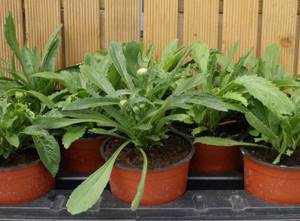
Substrate
The soil mixture for cornflower seedlings can be mixed from leaf and turf soil and sand in a ratio of 1:1:1 or from high-moor peat and sand in a ratio of 3:2. Such substrates have the pH-neutral pH value required by the bonito. A simpler solution is to buy ready-made soil for flowering plants; it is not expensive and contains everything necessary for the growth and development of nivaria.
Sowing seedlings
When sowing seedlings, there is no need for pre-soaking and stratification of nevus seeds. Sow them in moistened soil to a depth of 1 cm, then sprinkle with soil and water moderately with a spray bottle. The distance between seeds is kept within 3-5 cm, but you can sow them haphazardly.
Before sprouts appear, the air temperature in the room is maintained at 21-23 °C. Keep the container in place with diffused lighting and monitor soil moisture with regular spraying. You can create a greenhouse effect inside the container by covering it with film or glass and periodically airing it so that the seeds do not freeze.
Nielberry shoots from seeds appear in 2-3 weeks. When 3-4 true leaves are formed on them, they are picked into separate containers with a mixture of earth and humus. After picking, the air temperature is reduced by 3-4 degrees and more light is provided to the plantings to prevent the growth from stretching. If the lighting is insufficient, add additional lighting using phytolamps. A week before picking, the seedlings are fertilized with organic matter, and after it they are fed with root or heteroauxin.
Planting seedlings in open ground
Seedlings are planted outside in mid-May, after warm weather sets in. A week before planting, the site is dug up to the depth of a spade along with compost at the rate of 7-9 kg per 1 m², loosened, leveled and watered abundantly.
Holes are dug immediately before planting. Their size should allow the earthen ball to be freely positioned. The distance between holes and rows of holes is 30-60 cm. Planting density depends on the leucanthemum variety; the larger the inflorescences and spreading vegetative rosette, the greater the distance left between flowers.
The seedlings are buried up to the root collar, the soil around is slightly compacted and organomineral fertilizers are applied in accordance with the manufacturer’s instructions. Then the soil is watered and, after the top layer dries, mulched.
Obtaining your seed material
To grow nevus, you can use seeds collected from your plants. You need to understand that hybrid seeds do not transmit parental qualities. This rule does not apply to varietal varieties that are distinguished by the stability of the transmitted characteristics.
Nielberry seeds have excellent germination and winter hardiness. You can plant them immediately after assembly and wait for flowering next year. The seeds of the common cornflower are especially tenacious. It self-pollinates so effectively that many treat it as a weed and control it with herbicides.
The strongest and most beautifully flowering specimens are selected in advance and, without pruning, are allowed to bloom until the end. Seed material is collected at the end of August or September. A flower ready for collecting seeds has a completely dried stem and a dry capsule; when pressed, it cracks easily.
If you don’t plan to plant the seeds right away, they are dried for 7-14 days on a napkin (or whole with baskets) at room temperature. Then they are placed in paper bags with small holes.
Description of the plant
The official name is Leucanthemum. The plant has a second name among gardeners - garden chamomile. In Russian, the word “nivyanik” means “growing in a field” or in a field. In common parlance it is called popovnik and navel. It grows in one place for four to five years. The genus includes twenty varieties of flowers. Habitat in the wild - meadows, forest clearings, fields located next to the road. Growing regions:
- Australia;
- USA;
- European countries;
- Kuril Islands;
- Sakhalin;
- eastern part of Asia;
- New Zealand.
One bush produces straight stems that reach a height of 0.4 to 1.3 meters. The leaves are oblong and obovate, located either along the entire stem or near the root system. They are attached to it by petioles using their own base. The leaf blades have both toothed and lobed shapes.
On the head of one peduncle there are from 13 to 34 petals, which are pale pink or white. Thanks to their large number, the flower looks fluffy in appearance. The fruit part is ribbed and bare, presented in the form of a multi-seeded capsule. In one gram of its weight there are 650 oblong seeds. In the large-flowered cornflower, they ripen only when they are in a sunny space. That is why the crop grows in the fields. If it grows in a shady area, the stem will become crooked and the seeds will not form.
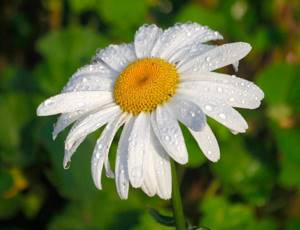
Near the root of the flower there is a leaf rosette. Flower stems grow from it. The root system is fibrous and short. The stem is ribbed and solitary with no branching. It reaches a height of up to 90 centimeters, the maximum size in the rarest cases is 130 centimeters. At its top there is an inflorescence-basket. It can be simple, double or semi-double, resembling a snow globe and an aster flower. Thanks to flowering, a delicate aroma emanates from the plant. The corolla is quite large, its maximum diameter reaches 12 centimeters.
Due to the fact that cornflower is similar in appearance to chamomile, people often try to collect it and use it in folk medicine. This is absolutely pointless, since it does not possess any useful properties.
When used as a decoction or tea, you can feel a sharp aftertaste that is not specific to pharmaceutical chamomile.
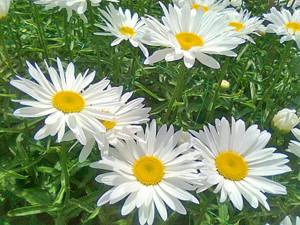
Reproduction of cornflower by dividing the root
Reproduction by dividing rhizomes is the most common method of cloning nevus, preserving all parental characteristics. Division is carried out in the spring before flowering or in the fall after flowering, before frost, if possible combining propagation with planting. Flowering is expected the next year, regardless of when, in spring or autumn, propagation was carried out.
Nielweed is planted every 3-4 years. This is done not only to maintain decorativeness and reproduction: during this time, the chamomile grows, compacting the planting, and the risk of developing bacteriological diseases increases. Digging can be done using a bayonet shovel. This should be done carefully, trying not to damage the roots.

The dug up plants are separated from each other with a sharp knife, into parts that are designated as replantable, and into parts that are completely removed. The transplant is carried out together with a lump of earth; there is no need to separate it from the roots.
The process of planting seedlings in open ground
Holes for seedlings are dug to the depth and width of a spade bayonet, at a distance of 30-60 cm from each other. Then, approximately 1/3 of the depth, they are covered with humus or compost and watered abundantly.
Faded and wilting leaves are removed from parts of plants designated for planting. Then the seedlings are placed in the holes, earth is buried up to the root collar, and the soil around the stems is compacted.
The planted plants are fed with organomineral fertilizers and watered with settled water. After the top layer of soil dries, it is mulched.
Planting seeds - where to start?
You need to plant flowers before the onset of cold weather so that they can take root in a new place and get stronger. If leucanthemum seeds are sown in autumn, seedlings will appear in spring. In order for the sown seeds to survive the winter well, the soil must be fertilized with humus and mulched with sawdust. The transplant to a permanent place will need to be done in May. Flowering will occur already in the current period.
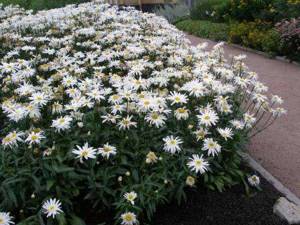
The plant blooms almost throughout the entire season. The first flowers appear in May and flowering lasts about two months. In August the plant blooms again. In order to increase the flowering period, dry inflorescences must be removed. Flowers can grow in one place for up to 5 years, and every 3-4 years the bushes must be divided.
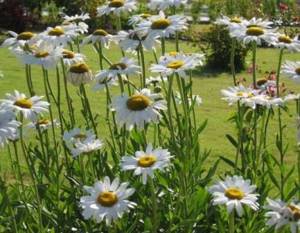
We hope that the topic of the article - leucanthemum nevus, growing from seeds , was useful to you. The most dangerous pests for nevus are meadow thrips. To get rid of them, flowers need to be treated with Intavir and Bazudin. This should be done once every two weeks.
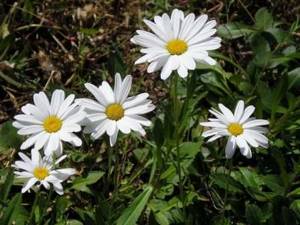
See also video:
NIVYANIK, or POPOVNIK (LEUCANTHEMUM)
Caring for the cornflower
Despite its apparent simplicity, cornflower is quite finicky in planting and care. The most capricious is considered to be the large-flowered or largest cornflower (Leucanthemum maximum), the most picky is the common cornflower (Leucanthemum vulgare).
How to water a nevberry
Proper watering means a lot for a cornflower: if there is a lack of moisture, it shrinks and degenerates; if there is too much, its roots rot. With proper watering, the inflorescences become larger and the foliage more vibrant.
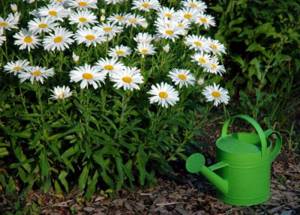
Watering should be regular, but not excessive; you should not create puddles on the surface. This applies to a greater extent to heavy (loamy) soils, and to a lesser extent to light (sandy) soils. The water should be settled, ideally without salt impurities.
In the hot season, watering is carried out in the morning and evening at the rate of 7-10 liters of water per 1 m². In cloudy, cool weather, watering is limited to once a week. In the rainy season, the nevberry is not watered.
If it is not possible to strictly adhere to the watering schedule, the nevus is mulched. Sawdust, grass clippings, bark chips or coconut fiber are suitable as mulch. This will help ensure a more even supply of moisture to the roots.
How to fertilize and feed garden chamomile
When leucanthemum grows on black soil, it is enough to lay compost or humus around the stem once a season. If you want to grow strong, abundantly flowering plants not on black soil, you will have to apply fertilizing.
Fertilizing program for the season:
- In April, fertilizers with a high nitrogen content are applied. Urea (carbamide) is best suited for this purpose. The application rate is 20-25 grams per 1 m².
- In early May, it is recommended to feed the cornflower with mullein, at the rate of 3 liters of strained weak solution per 1 m². Two weeks after this, use a nitrophoska solution (2 tablespoons of nitrophoska are diluted in 10 liters of water) at the rate of 5 liters of solution per 1 m². Both feedings are carried out using the foliar method.
- At the beginning of June, it is useful to add bone meal to the area at the rate of 50 g per 1 m². If there is no flour, add wood ash at the rate of 5-6 tbsp. l. per 1 m².
- When the cornflower has faded, repeat feeding with mullein and nitrophoska with the same period between them as in early May.
The rich green color of the foliage and stem indicates that the nivaria receives a sufficient amount of nutrients. If there are not enough of them, the green mass becomes lighter and acquires a yellowish tint in good light.
Trimming
As the cornflower fades, its apical part is pruned to a height of 10-15 cm. Pruning stimulates re-blooming, promotes active root growth, the formation of young shoots and prevents self-seeding, for which the cornflower is especially famous.
If it is necessary to preserve some inflorescences to obtain seed material, the largest baskets are left on the stem. When the time comes, they are collected, preventing self-disclosure.
Caring for nibbles in the fall: preparing for winter
In autumn, the cornflower is pruned to a height of up to 10 cm from the ground level, leaving basal leaves on the stems. If bare roots are found, they are covered with earth.
Nivyanik is frost-resistant and can withstand frosts down to -10 °C even in winters with little snow without additional manipulations. But this only applies to plants that have already wintered. First-year flowers, especially large-flowered and double varieties, must be prepared for winter. To protect the plantings from freezing, they are covered with a 10-15 centimeter layer of leaves, spruce branches or special covering material. In spring, the cover is removed to prevent the plants from succumbing.
Diseases and pests affecting nevus
Not a single plant is immune from insect pests and various diseases, even one that is strong and has good natural immunity, like cornflower. The reasons usually lie in unfavorable natural conditions or improper care of plantings.
Diseases
Nielweed immunity decreases during rainy, cool summers. During the chilly season, it is often overcome by fungal diseases. The most common of them are:
- Root rot or fusarium. It affects the cornflower during the flowering period. It can only be dealt with mechanically by removing all infected copies. For prevention, seeds and seedlings are treated with biological products (Trichodermin, Gamair).
- Ramulariasis. Appears on the leaves in the form of light spots with a brown border. Fungicides (Kaptan, Cuprozan, Polycarbacin) help fight this scourge. In the fall, all diseased specimens are pruned and burned. For prevention in the spring, the area under the nevus is treated with Fitosporin, Trichodermin or Mikosan.
- Powdery mildew. Nielweed is attacked at the end of summer, when the temperature begins to drop. Appears as a white coating on the leaves. If measures are not taken, it spreads to neighboring plantings. It can be stopped with fungicides.
- Rust. It appears as brown powdery pustules on the stems and on the underside of the leaves. There is no point in fighting them; only the complete destruction of diseased specimens helps. Neighboring plants must be treated with 1% Bordeaux mixture or fungicides (Abiga-Pik, Cumulus, Polyram, Strobi).
Nivyanik is also susceptible to other diseases. The most common of them are cylindrosporium (blackish crusts on the underside of leaves) and white rot (sclerotinia). Treatment with Bordeaux mixture, topsin or foundationazole can help prevent them.
Pests
Often pests are discovered only when the nivaria begins to fade, wither, and lose its attractiveness. Therefore, the best fight against them, as well as against fungal diseases, is early prevention, which consists of spraying with special preparations.

Thrips on cornflower
The most common pests of nevus are:
- Thrips. Small black flies settling on inflorescences. It is impossible to get rid of them completely. You can only create insecticidal problems for thrips to minimize damage and protect neighboring plants. Suitable insecticides are karate, malathion, confidor and the like.
- Chrysanthemum leaf miner. It gnaws winding passages inside the leaves. If appropriate traces are found, the affected leaves are removed and burned. Then the nevus and neighboring plantings are sprayed with preparations containing pyrethrum.
- Aphid. You can fight aphids using folk remedies and insecticides. The second method is more effective. Chemicals that are suitable for nevus include all synthetic pyrethroids and some organophosphorus insecticides (Karbofos, Karate, Intavir, Kinmiks, Fufanon). From organics, it is better to use neonicotinoids (Biotlin, Confidant, Bankol).
All articles about Nivyanik on the site can be read by following this link: NIVYANIK
Garden chamomile is a gentle, positive flower that looks great not only on the site, but also as a cut flower. And some low hybrid varieties of leucanthemum can be successfully grown as indoor potted crops. They fit perfectly into the interior, fit any style and look harmonious in a room of any size.
Types and varieties of leucanthemum
There are several species of this crop that are found in the wild. Based on them, breeders have developed many different varieties that differ in height, flower shape and other characteristics. Since cornflower is very popular, its breeding continues to this day.
Common view
This is the most unpretentious and widespread species in nature. Its varieties are distinguished by relative drought resistance and shade tolerance. These include:
- Maxima Kenig. Plant height is 1 m, flower diameter is 12 cm.
- San-souci. Its height is also 1 m, the inflorescence is half double with a small center.
- May Queen. Grows up to 50 cm tall, has a semi-double flower.
Nivyanik is the largest
It is also called large chrysanthemum due to its high decorative value. In the wild, such a plant can be seen in the Pyrenees. Varieties of this species are characterized by good winter hardiness, but the lifespan of many of them is only 3 years, so they require regular renewal. Here are some of them:
- Alaska. Withstands cold Russian winters very well. The diameter of its inflorescence is 10 cm.
- Crazy Deezy. One of the most beloved varieties by flower growers. This is a cornflower with double flowers, which look very original and really resemble a chrysanthemum. The height of the bush is 90 cm.
- Christine Hagemann. It is distinguished by a powerful bush with a height of 100 to 120 cm and large double inflorescences with a diameter of up to 12 cm. It can grow in one place for a long time without transplanting.
Leucanthemum splendid
It is a hybrid obtained by crossing the first two species of the plant. It is not found in the wild. Its most popular variety is called Fiona Goghill. It has creamy white chrysanthemum-shaped inflorescences with petals that are shorter on the inside than at the edges.
Kuril flower
As the name implies, its homeland is the Kuril Islands. Although its small bushes grow only 20 cm, the flowers reach 8 cm in diameter.
Swamp view
This species is native to Spain. It bushes very well, forming many shoots with delicate white flowers of 3 cm in size and reaching a height of 25-30 cm.
Alpine variety
Good for decorating borders. This is a low-growing variety with a height of 15−30 cm. Its flowers are characterized by a bluish tint. They look very beautiful in group plantings.


